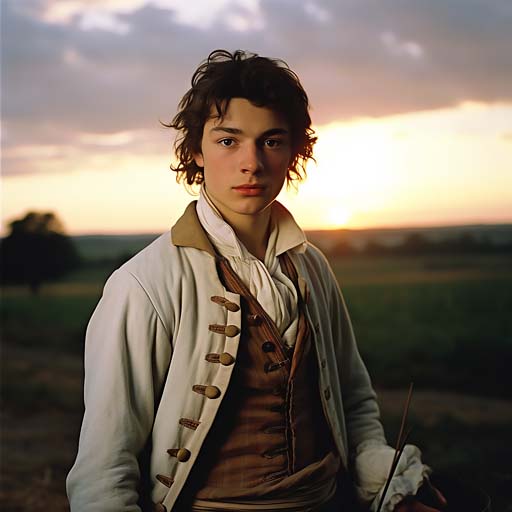
Henri-François Riesener
/1767-1828/
Henri-François Riesener was a French portrait painter and miniaturist. He hailed fr om a family with artistic roots, being the son of renowned German-born cabinet-maker Jean-Henri Riesener and the father of Léon Riesener, a prominent Romantic painter.
Riesener initially trained under the guidance of François-André Vincent and later Jacques-Louis David. However, at the onset of the French Revolutionary Wars, he left David's studio to join the army, wh ere he served in Italy and Egypt. Upon returning to France, Riesener redirected his focus toward portrait painting and miniatures. His notable works were showcased at the prestigious Paris Salon, featuring portraits of notable figures such as Eugène de Beauharnais, général de brigade Michel Ordener, Madame Sallandrouze, and Charles Maurice de Talleyrand-Périgord, among others. Additionally, he captured the essence of the singers from the Opéra-Comique and created a renowned portrait of his cousin André-Antoine Ravrio, a celebrated bronze sculptor at Napoleon's court, now displayed in the Musée du Louvre. During a dinner, Riesener even produced 50 copies of his original portrait of Napoleon I.
In 1807, Riesener tied the knot with Félicité Longrois, who served as a lady-in-waiting to Empress Josephine. Subsequently, he began receiving commissions from British patrons. However, when the British army departed from Paris, opportunities for commissions dwindled. Seeking new prospects, Riesener relocated to Russia in 1815, leaving his wife and son Léon behind in Paris. He spent the next seven years in Russia and Poland, residing in Moscow (1816–1823), Saint Petersburg, and Warsaw. During this period, he painted portraits of notable figures and collaborated with Sewbach on an equestrian portrait of Alexander I of Russia.
Returning to Paris in 1823, Riesener devoted his remaining five years to imparting his artistic knowledge to his son Léon, giving him his first drawing lessons and securing him a position in Antoine-Jean Gros's studio. He also played a crucial role in securing a place for his nephew, Eugène Delacroix, in the studio of Pierre-Narcisse Guérin. Sadly, Henri-François Riesener passed away in 1828, leaving behind a legacy as a talented portrait painter and a mentor to future artists.